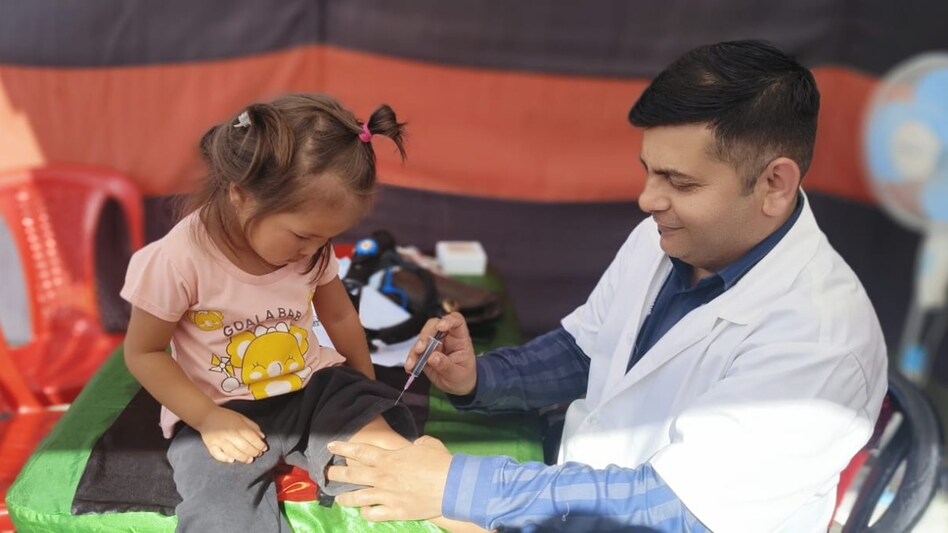 As of 2023, India’s healthcare spending was just 1.8% of GDP, well below the global average of 6%.
As of 2023, India’s healthcare spending was just 1.8% of GDP, well below the global average of 6%.  As of 2023, India’s healthcare spending was just 1.8% of GDP, well below the global average of 6%.
As of 2023, India’s healthcare spending was just 1.8% of GDP, well below the global average of 6%. State governments across India continue to allocate less than the recommended 8% of their budgets to their respective health and family welfare departments, as outlined in the National Health Policy (2017). The 2024-25 Budget Estimates show that the average allocation for healthcare across states stands at 6.2%. This gap between policy recommendations and actual financial allocations raises concerns among economists about the adequacy of public health funding.
Data from PRS Legislative Research, Institute for Policy Research Studies, reveals significant variations in healthcare spending across states. Goa and Delhi are among the few that allocate more than the national average, with Goa meeting the 8% target. In contrast, states such as Uttar Pradesh, Bihar, and Madhya Pradesh allocate less than 6% to healthcare, highlighting disparities that could impact health outcomes, particularly in underserved regions.
Differences in how states classify healthcare-related expenditures further contribute to these variations. For example, Andhra Pradesh and Telangana classify spending on schools for marginalised communities as welfare, not under education or health. Similarly, Punjab categorises electricity subsidies for farmers under agriculture instead of energy. These classifications reflect diverse approaches by states in prioritising and reporting their budgets.
Central schemes like Ayushman Bharat and the National Health Mission significantly influence healthcare funding by providing essential support. However, the extent of funding varies across states. In Delhi, where police functions are managed by the Union government and rural areas are minimal, healthcare spending patterns differ markedly from other states.
“Many states are not recognising the importance of healthcare services, especially in terms of human capital formation and productivity growth. Without strengthening healthcare infrastructure, states risk spending excessively on treating illnesses, which may only result in limited improvements in mortality rates,” said Arup Mitra, Professor of Economics at South Asian University in New Delhi.
He added, “States will also face challenges in attracting investment due to the poor quality of human capital. The health-productivity-growth nexus must be realised sooner rather than later, as it is the only sustainable pathway for long-term progress and prosperity.”
As of 2023, India’s healthcare spending was just 1.8% of GDP, well below the global average of 6%. Experts have called for an increase in this allocation to 2.5% of GDP, with a focus on improving infrastructure, addressing non-communicable diseases (NCDs), and strengthening primary healthcare.
"Current levels of public health funding remain inadequate to address critical issues such as the lack of healthcare infrastructure, the growing burden of both communicable and non-communicable diseases, and the need to ensure equitable access to quality care," said JVR Prasada Rao, former Secretary, Union Health Ministry.
"Serious differences in health budgets across states clearly reflect the insufficient priority given to the health sector by the states. Rural and underserved regions are particularly vulnerable to these shortfalls, risking further marginalisation," he added.
Healthcare funding in India is a critical component of state budgets, with the central government providing support through Centrally Sponsored Schemes (CSS). These schemes are designed to address sectors within both the state and concurrent lists, including healthcare. The 15th Finance Commission recommended Rs 4.4 lakh crore in grants for local bodies between 2021-22 and 2025-26, with 16% of this amount allocated to the healthcare sector. These grants were intended to support diagnostic infrastructure and health and wellness centres.
From 2021-22 to 2023-24, Rs 2.5 lakh crore was earmarked for local bodies under these grants, but only about 80% of the recommended amount has been released. Rural local bodies (RLBs) received more than 90% of their allocated grants, while urban local bodies (ULBs) and the primary healthcare sector faced delays in receiving their share.